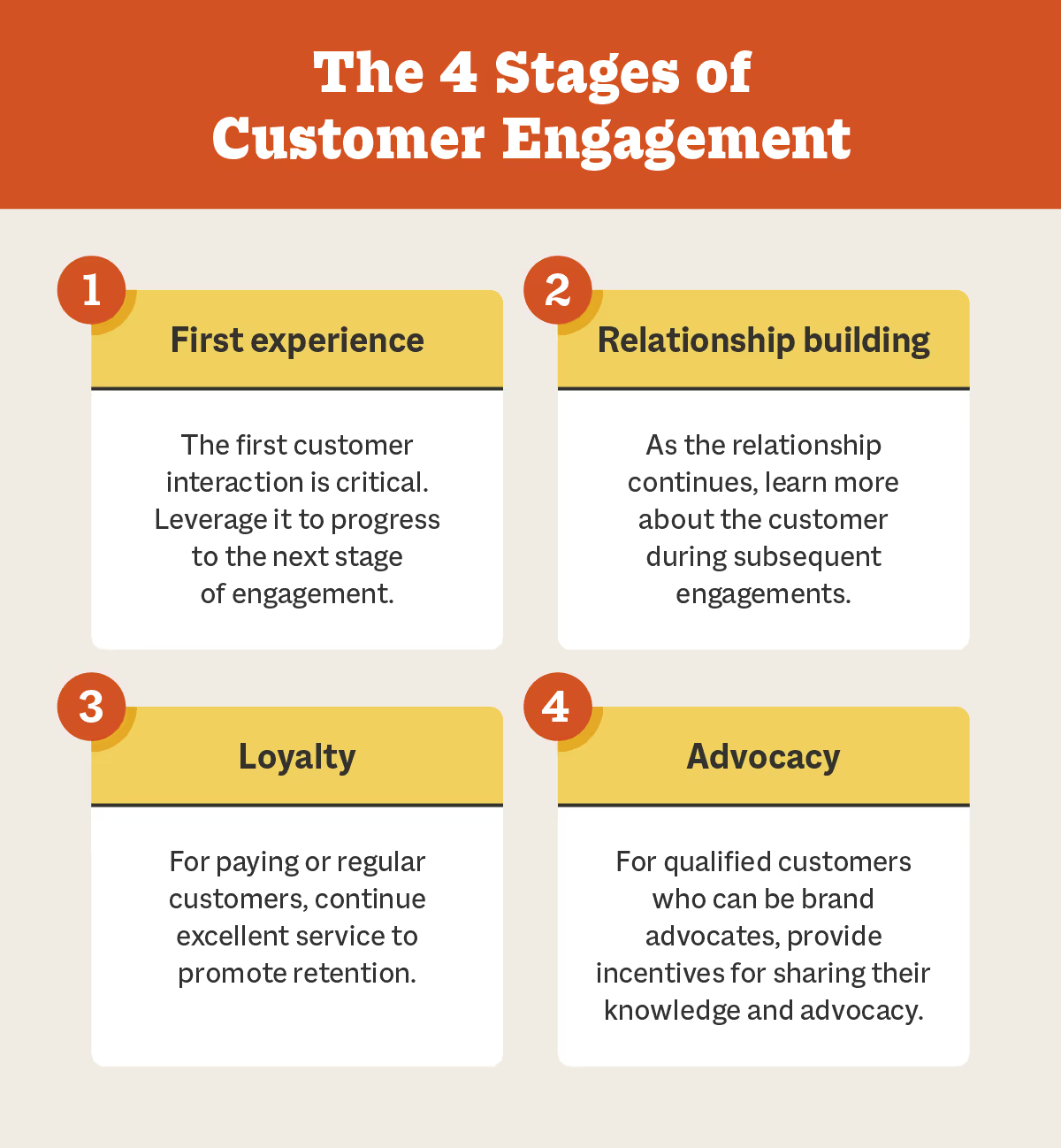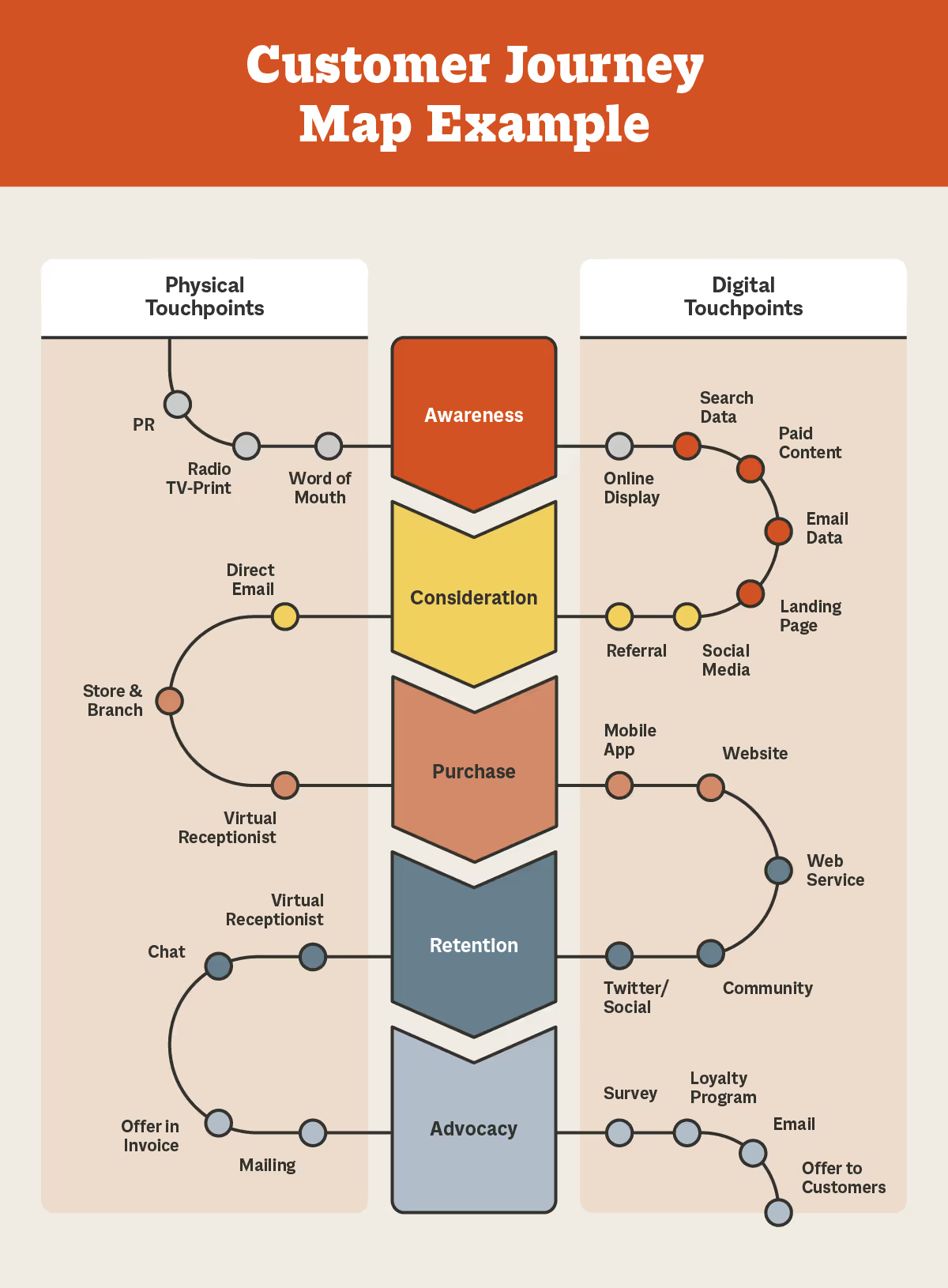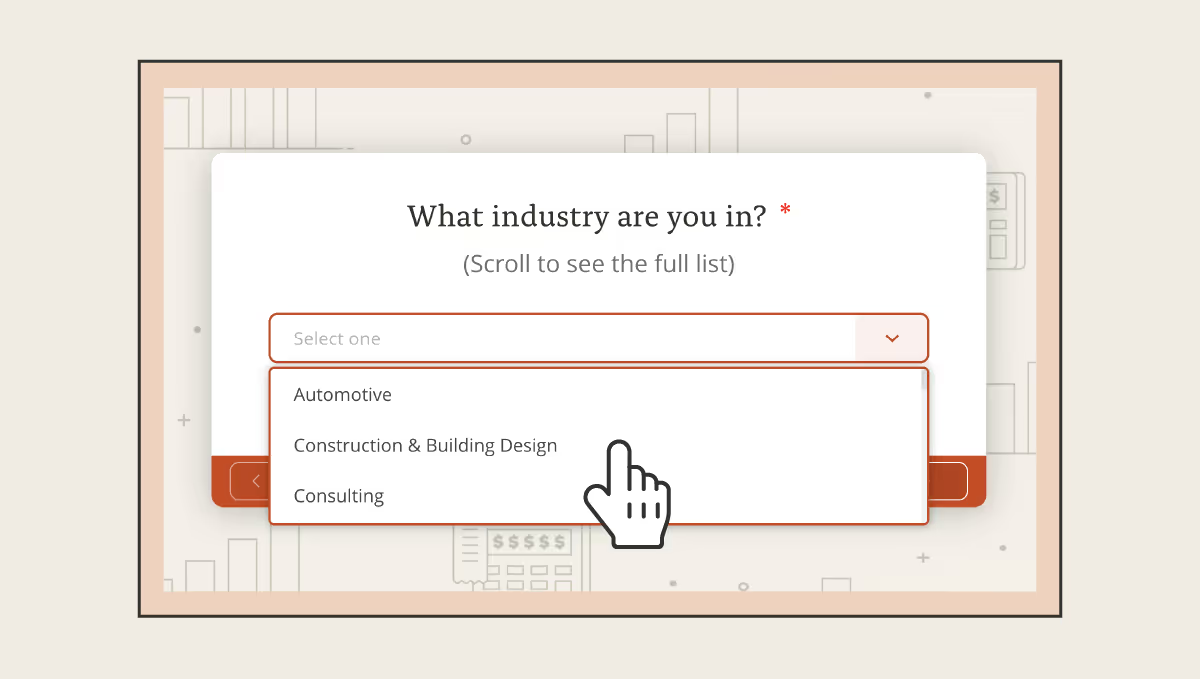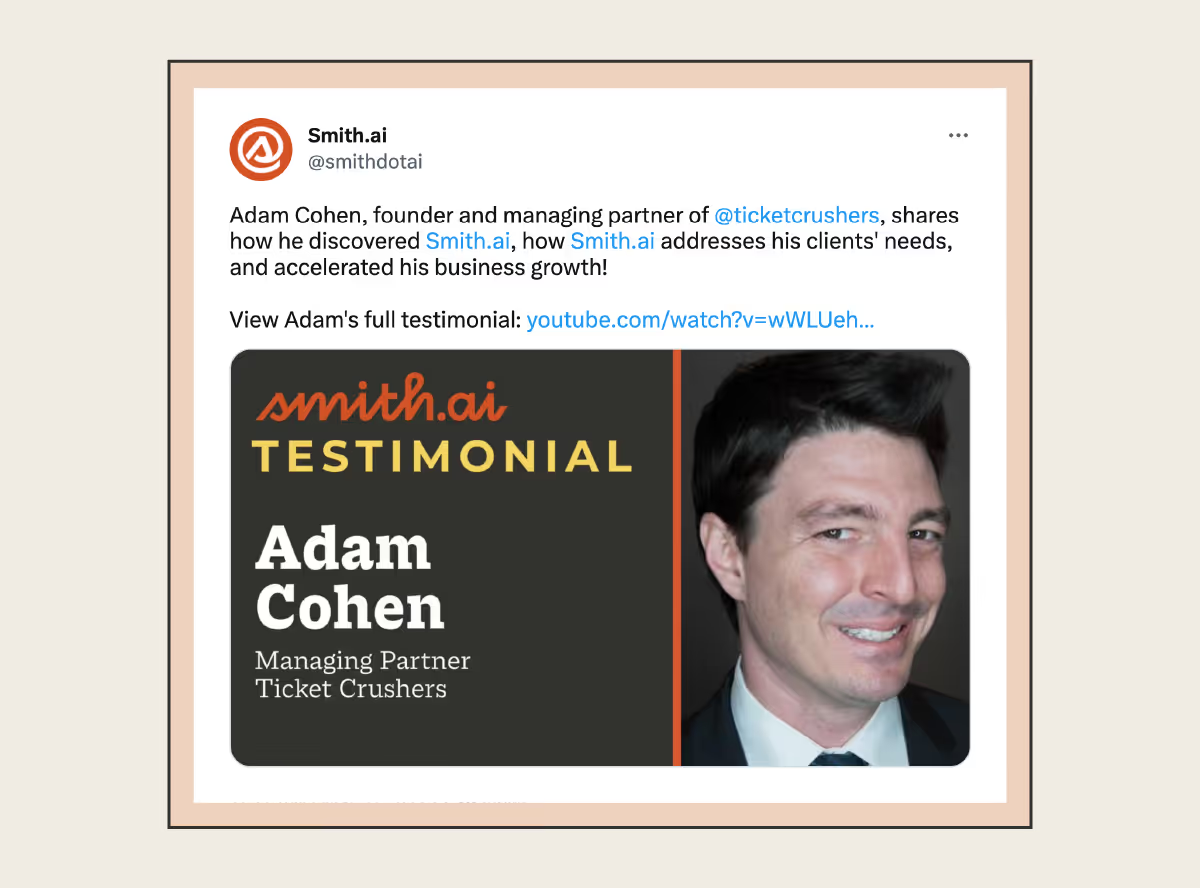17 Customer Engagement Strategies To Enhance the Customer Experience
17 Customer Engagement Strategies To Enhance the Customer Experience

In today's fast-paced and ever-changing business landscape, it's more important than ever for businesses to have a solid customer engagement strategy to promote a positive customer experience.
While you may think you have a solid engagement strategy already in place, 54% of customers think companies need to fundamentally transform how they engage with them.
Whether it's through phone, chat, text, or social media, engaging with customers is essential for building brand loyalty, increasing customer satisfaction, and ultimately driving revenue growth.
In this post, we’ll explore what a customer engagement strategy is, why it’s important for your business, and 17 customer engagement strategies that you can use to connect with your customer and create a positive and lasting impression.
What is a customer engagement strategy?
A customer engagement strategy is a plan or approach that a business uses to interact, build relationships, and retain its customers. It’s about creating an exceptional customer experience in each of the following four stages:
- First experience: The critical moment where the customer engages with your business for the first time. You’ll want to leverage that first experience so the customer will progress to the next stage of engagement.
- Relationship building: The stage where a customer engages with your brand for a period after the first encounter. The goal is to learn more about the customer as you continue to nurture the relationship. The length of this stage varies from business to business.
- Loyalty: When somebody becomes a paying customer, regularly engages with your business, and their level of familiarity with you is now established. You’ll want to continue delivering excellent service to ensure their retention.
- Advocacy: The stage where a customer is extremely knowledgeable about working with your brand and is qualified to become a brand advocate. You can leverage these customers by providing incentives and rewards for those who share their knowledge, experience, and advocacy. These folks are extremely valuable to a brand — not only for ongoing sales but also for word-of-mouth referrals.
It's crucial to effectively engage your customers at each stage if you want to capitalize on them, as 86% of purchasers are willing to spend more for a better customer experience.

Let’s say your sales team recently started using a new sales tracking app (at this point, you’d be in the loyalty stage). As new users to the software, you’re instantly enrolled in a product tutorial and have access to one-on-one consultations and helpful templates. If you have any questions, there’s an active community forum and 24/7 live chat, making it easy to obtain any assistance you may need and requires very little effort.
On the other hand, imagine those support channels and templates didn’t exist. Instead, picture an online FAQ page and a phone number for customer support that doesn't even connect you to a live agent. As a result, you have to talk to an automatic system that sends you around in circles to find a solution. At that point, you’d seriously consider a new software.
You need a customer engagement strategy because positive experiences differentiate you in a competitive market. Otherwise, your customers may opt for a competitor that offers better experiences than you.
Why is customer engagement important?
A strong relationship with your customers is built on customer engagement. To maintain the relationship and encourage loyalty, you want to demonstrate that you value your customers.
There are several reasons why customer engagement is important:
- Builds customer loyalty: Engaged customers are more likely to be loyal to your business, continue to purchase your products or services, and recommend you to others.
- Enhances customer experience: Helps your business create personalized experiences for your customers, improving their satisfaction and loyalty.
- Increases customer retention: Helps your business reduce customer churn and retain more customers over time.
- Generates more revenue: Engaged customers are more likely to make repeat purchases and spend more money over time, leading to increased revenue.
- Provides valuable insights: Engaging with customers and seeking their feedback can provide businesses with valuable insights into their needs and preferences, which can help product development and marketing.
- Builds a positive reputation: Help your business build a positive reputation in the market, differentiate your business from competitors, and attract new customers.
Overall, a customer engagement strategy is important for businesses that want to build strong customer relationships, improve customer satisfaction and loyalty, and drive revenue growth.
17 Customer engagement strategies
Now that you know what a customer engagement strategy is and why it’s important for the success of your business, it’s time to get into how to build one.
We’ll walk you through some excellent customer engagement strategies and ideas that’ll help you engage your customers and keep them loyal to your business.
1. Understand your customers
The key to building a successful customer engagement strategy is to understand your customers. Without having a clear understanding of your target audience and how they interact with your business, you won’t be able to construct any customer engagement strategies.
Making a map of your customers' journey and identifying all meaningful touchpoints and/or bottlenecks is a smart place to start. By doing so, you can learn more about their wants and behaviors and spot engagement opportunities.

2. Personalize every interaction
Personalization is another major factor to engaging with your customers. In fact, 59% of customers believe that personalization based on previous interactions is a major factor to retaining their business. That’s because personalized customer experiences show your customers that you are in tune with their needs and interests.
Personalize interactions by leveraging customer data to customize communication and share relevant information with them, depending on where they are at in their customer journey.
3. Engage customers on social media
Social media platforms like Facebook, Twitter, Instagram, and TikTok have become a place where customers can voice their opinions about brands.
These sites give you direct access to your customers' raw thoughts and feelings. Make sure you leverage these platforms to engage with customers, including responding to comments, reposting content, providing helpful resources, and answering customer inquiries.

4. Offer helpful content and resources
Content is key when it comes to engaging your customers at every step of their journey.
You can create helpful content like blog posts and videos for those in the awareness phase of the funnel to educate potential customers on specific questions or challenges. Providing content that addresses what your customers search for helps establish your business as a solution.
It's important to continue engaging with your active customers and provide them with valuable content and resources to help them get the most out of your product. This could include video tutorials, step-by-step guides, best practices, and product updates.
5. Leverage live chat
To support customers by responding to their questions in real time, one of the most popular channels you must use is live chat. Ninety percent of customers expect an immediate response to their support queries, so it's critical you have an accessible channel with live agents on hand and prepared to assist.
A live chat channel makes it convenient for your customers to engage with you while allowing agents to turn each interaction into an excellent experience that can boost retention. In fact, 79% of businesses say live chat has a positive effect on sales, revenue, and customer loyalty.
To make the most of your chat channel, outsourcing 24/7 live agents to handle your live chat takes the responsibility off your plate. We’ll capture and engage leads, screen potential clients, and book consultations on your website so your team can focus on other aspects of your business.

6. Offer loyalty programs
Loyalty programs can engage your customers and retain their business. By offering exclusive discounts, rewards, and other incentives, you can create a sense of loyalty and develop an emotional connection with your customers, leading to increased customer retention and satisfaction.
One effective strategy is to offer points or rewards for every purchase a customer makes. They can redeem these points for discounts, free products, or other rewards.
Another effective tactic is to offer exclusive access to new products or services or early access to sales or promotions. You can also offer personalized rewards based on customer preferences and behaviors, like personalized discounts or free products on a customer's birthday or anniversary.
7. Encourage customer reviews
Encouraging your customers to leave reviews helps engage them further while building social proof for prospects.
When potential customers see positive reviews from others who have used and enjoyed a product or service, they are more likely to trust the brand and make a purchase. Not only that, but these customer reviews can provide valuable feedback, helping you improve your offerings to better meet your customers' needs.
Encourage your customers to leave a review by sending them a follow-up email with a direct link to your review platform. You can offer incentives like discounts or free products for their reviews.

8. Provide excellent customer service
Adding excellent customer service to your customer engagement strategy can help create a superior experience. When customers receive personalized and effective support, they feel valued and appreciated, leading to increased loyalty, more referrals, and repeat business.
Start by providing multi-channel support, including phone, email, and live chat, to meet customers' preferences and needs. You’ll also want to offer personalized and timely responses to customer inquiries and complaints, showing that you value your customers and are committed to resolving any issues.
9. Create interactive content
Interactive content such as quizzes, calculators, polls, and surveys can help you create a more personalized experience for your customers, encouraging them to interact with your brand, and share their opinions.
One effective strategy is to use online quiz makers to create content that is relevant to your audience and industry. You can share these quizzes on social media platforms or embed them on your website, encouraging customers to engage with your brand and share their results.
Another effective strategy is creating an interactive calculator to help your audience solve a problem or make a decision. For example, our interactive ROI calculator can show clients the additional revenue they can generate through sales outreach. Tools like this help add value to the customer experience.

10. Partner with influencers
Partnering with influencers is a customer engagement strategy that can help you increase your brand visibility, reach a wider audience, and build trust with your customers.
Influencers have a strong following on social media platforms and can help you reach potential customers who may not have heard of your brand before. Additionally, influencers can create authentic content that resonates with their followers, leading to increased trust and credibility for your brand.
If you decide to use this kind of strategy, find influencers in your industry that have a sizable and engaged following and a voice that aligns with your brand.
11. Host events
Events provide an opportunity for you to connect with your customers in person or virtually, creating a more personalized experience and fostering a sense of community around your brand. Events can also create buzz and excitement around new products or services, leading to increased brand visibility and customer engagement.
You can host a variety of events, including product launches or demonstrations, giving customers a first look at new products, services, and training sessions—all while providing them with valuable education and networking opportunities.

12. Use referral programs
Referral programs encourage existing customers to refer their friends and family to your business, providing an incentive for both the existing customer and the new customer to make a purchase. It’s a great way to keep your customers engaged while leveraging the power of word-of-mouth marketing.
You can offer your existing customers incentives for each new customer they refer to your business. Make it even more engaging by personalizing tiered incentives and providing additional rewards for customers who refer multiple new customers.
13. Leverage automated chatbots
Chatbots are a great investment as they can provide immediate support and answer common customer questions, engaging your customers with quick solutions to their inquiries. Since responsiveness wins new business, you need a tool that can engage your customers and capture leads immediately.
Smith.ai offers a free AI chatbot that automatically captures, screens, and converts leads visiting your website. Our chatbot handles unlimited inquiries 24/7, delivers accurate & helpful answers instantly, and screens all your leads with pre-set question sequences.

14. Use surveys
Using surveys as a customer engagement strategy helps you understand your customers' needs and preferences, allowing you to make data-driven decisions that improve customer satisfaction and retention.
Surveys can create a sense of community and engagement around your brand, showing customers that your business values their opinion and is committed to providing the best possible experience.
To use this strategy, you can send surveys to customers after they make a purchase or use a service and ask for feedback on their experience.
15. Encourage user-generated content
User-generated content (UGC) is content that customers create, such as social media posts, reviews, and testimonials. By encouraging customers to share their experiences with your business, you can create a sense of community and engagement around your brand, leading to increased customer satisfaction and loyalty.
UGC can also create a more authentic and trustworthy image for your brand, as customers are more likely to trust recommendations and reviews from other customers than from your own content or advertisements.
You can encourage your customers to create UGC by hosting contests or giveaways that ask customers to share their experiences with your brand by creating a branded hashtag to use when sharing their content on social media. You can also feature UGC on your website and social media platforms to showcase positive experiences and customer feedback.

16. Regularly communicate
Regular communication with your prospects, customers, or past customers is a key component of improving your customer engagement strategy.
The mere fact that a prospect viewed your website does not guarantee that they converted after the initial engagement; extra nurturing is required to get them to convert, and eventually make a purchase. On the other hand, a customer who made a single transaction could be interested in additional offerings you provide but may not have been aware of them.
The lesson here is to be in constant communication and follow up with your leads to keep them engaged and keep you top of mind when they decide to make a purchase.
17. Offer a human approach
In a world where businesses implement automation left and right, it’s important to recognize that even though these tools can be very effective, they can also be detrimental, if not used correctly.
Human interaction is necessary to provide a positive customer experience. In fact, 60% of customers prefer human interaction when engaging with brands. Customers want to reach real humans when engaging with your business, whether it be through call, chat, text, or social messages.
Take Smith.ai virtual receptionists, for example, where we combine human and machine intelligence to provide the effectiveness of AI with the empathy and personal connection that only a live agent can provide.
If you don’t have a live and dedicated team to handle your interactions, you could lose opportunities to build great customer relationships.
Improve your customer engagement with Smith.ai
A successful customer engagement strategy should create an exceptional customer experience at all stages of their journey — from when a potential customer first interacts with your brand to after they’ve purchased your product or service.
At Smith.ai, we offer unified solutions to answer and act on every lead while engaging your current customers so you can rest assured knowing they're in good hands.
Whether you’re looking for a virtual receptionist, live chat, or outreach campaign service, our professional 24/7 team of agents can assist you with engaging your leads and customers so you can focus on other aspects of your growing business.
To learn more about how Smith.ai can help your business, book a free consultation.
Sources: Salesforce 1, 2 | Super Office | HubSpot | Kayako | Oracle
Take the faster path to growth. Get Smith.ai today.
Key Areas to Explore
Technical Implementation Terms
Voice user interface (VUl) design
Speech recognition integration
Text-to-speech optimization
API connectivity and webhooks
Real-time data synchronization

Your submission has been received!








%20(1)%20(1).avif)





.svg)



